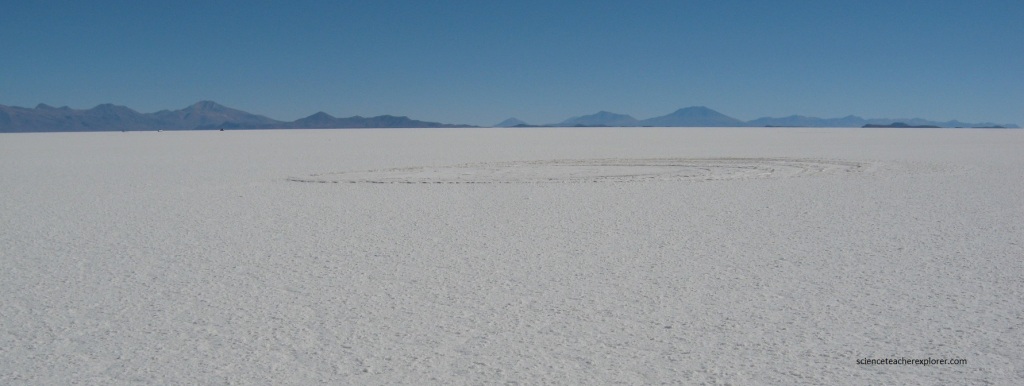Salar de Uyuni, Bolivia
On July 24th, 2019; I left La Paz, Bolivia with my Toyota 4-Runner rental to drive and explore the Uyuni area in southern Bolivia. It took me two days to reach Uyuni. There I picked up a guide and small group of trekking buddies. Two from Texas, 1 from Belgium and 2 from Italy.

Our first stop was the Great Train Graveyard. It was only about 3 km away from the Uyuni train station. Uyuni has long been known as an important transportation hub in South America and it connects several major cities. In the early 19th century, big plans were made to build an even bigger network of trains out of Uyuni, but the project was abandoned because of a combination of technical difficulties and tension with neighboring countries.

Filled with hollowed out bodies that have completely rusted over and other remains, the “Great Train Graveyard” (also known as Train Cemetery) can be found on the otherwise deserted outskirts of Uyuni. Pictured below, most of the trains that can be found in the Graveyard date back to the early 20th century and were imported from Britain. There are over 100 train cars with unique structure and occasional graffitis. The salt winds that blow over Uyuni, which hosts the world’s largest salt plain, have corroded all of the metal.

Over the course of millions of years, as the watery depths of an ancient inland sea in southwest Bolivia, evaporated and become desert, thick fields of rock salt that stretch as far as the eye can see were unveiled.

Salar de Uyuni (or Salar de Tunupa) is the world’s largest salt flat, or playa, at over 10,000 square km in area. It is in the Daniel Campos Province in Potosí in southwest Bolivia, near the crest of the Andes at an elevation of 3,656 m (11,995 ft) above sea level.

A closer look at what is known as the Salar de Uyuni, however, reveals surviving relics of shallow water underneath the crust sodium chloride camouflaged by a fine desert dust.

Pictured above, Salar de Uyuni is an endless sheet of crusted salt(created by the crystalline nature of the salt), dotted with circular anomalies and linear fault-like anomalies, Bolivia’s salt flats are a dazzling display of nature’s magic.

Pictured above and below, in the middle of this seemingly infinite salty lake is a hotel (café) built entirely out of—naturally—salt.

Created from salt bricks held together with salt mortar, the hotel (café) and everything inside it, including the chairs and tables, are made from salt, (pictured above). While the Hotel Playa Blanca has no electricity and little in the way of amenities (its water must be trucked in), it does offer even more important and certainly rarer qualities: utter silence, an all-encompassing austere beauty, and an astonishing view of the night sky.

The Salar de Uyuni is so big, you can witness the curvature of the earth. In 8 km of distance the earth drops 5 m. The mountains in the far distance, seem to disappear. The large area, clear skies, and exceptional flatness of the surface make the Salar ideal for making a couple of videos with special-effects below.

My Salar de Uyuni trekking buddies demonstrating a music video.
Bolivia’s (and the world) largest salt deposit, this huge miner flat also includes fields of chalky gray gypsum and is peppered with islands of mountains. One of our destinations for the day, is to drive to the Isla Incahuasi, (pictured below).

Isla Incahuasi is the Spanish name where isla means island, Inca stands for Inca, and huasi is derived from the Quechua word wasi meaning house.

Incahuasi has a total area of 24.62 hectares (61 acres) and hosts gigantic cacti (Trichocereus pasacana) (pictured below).

On the Isla Incahuasi, there are unusual and fragile coral-like structures and deposits that often consist of fossils and algae. The place is the top of the remains of an ancient volcano, which was submerged when the area was part of a giant prehistoric lake, roughly 40,000 years ago.

The crust of the Salar de Uyuni serves as a source of salt and covers a pool of brine, which is exceptionally rich in lithium. It contains 50% to 70% of the world’s known lithium reserves.
